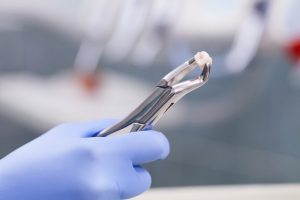 So, you’ve just been told that you need a tooth extracted because decay has set in too far and neither a filling nor dental crown will suffice. Understand that extracting teeth is your dentist’s last resort, but sometimes it’s necessary for your oral health. That’s why your dentist in Westampton is discussing what you can expect during your treatment and what aftercare will entail.
So, you’ve just been told that you need a tooth extracted because decay has set in too far and neither a filling nor dental crown will suffice. Understand that extracting teeth is your dentist’s last resort, but sometimes it’s necessary for your oral health. That’s why your dentist in Westampton is discussing what you can expect during your treatment and what aftercare will entail.
Extractions are one of the most common and straightforward surgeries your dentist performs, so just know that you’ll be in good hands.
What Can I Expect During Treatment?
Before your dentist can pull the affected tooth, he’ll start by providing you a local anesthetic designed to numb the area. This will prevent you from experiencing a majority of the pain and discomfort. The steps after the injection depend on the nature of your tooth extraction. For example, if you are pulling multiple teeth or impacted teeth, they will need to remove gum and bone tissue to uncover it.
After locating the tooth, they will use a set of forceps to grasp the tooth and gently rock it back and forth to loosen it from the jaw bone and break the ligaments holding it in place. After the tooth is removed, a blood clot will start to form in the socket. At this point, the dentist will give you a gauze pad to bite down on to help stop the bleeding. If needed, the dentist will place a few stiches to close the edges of the extraction site.
What is the Aftercare Like?
Once the extraction is complete, the dentist will send you home and you’ll need time to recover. To reduce mouth pain, take painkillers as prescribed by your dentist in Westampton. Once you’re home, make sure to continue biting firmly yet gently on the gauze pad. Remember to replace the gauze pad before it becomes soaked with blood. Keep the pad in for a maximum of three to four hours after the extraction. To reduce swelling, apply an ice bag to the area in 10-minute intervals.
After 24 hours, rinse your mouth out with a solution made of 1/2 teaspoon of salt and 8 ounces of warm water. Avoid smoking, as this can inhibit healing. Stick to eating soft foods, such as soup, applesauce, pudding, or yogurt for the first day after extraction. As the extraction site heals, you can start adding more solid foods to your diet.
How Long Will Recovery Be?
For the first 24 hours, you can expect some swelling and residual bleeding as the area continues to heal. However, if you feel pain about four hours after the extraction, contact your dentist immediately. You should also do this if you experience:
- Fever or chills
- Nausea or vomiting
- Redness or excessive discharge from the affected area
- Shortness of breath, chest pains, or chronic coughing
The average recovery time for a tooth extraction is one to two weeks. During this healing period, new bone and gum tissue will grow in the empty space.
After a tooth extraction, you’ll want to consider replacing your tooth. Schedule an appointment with your dentist today to learn your options!
